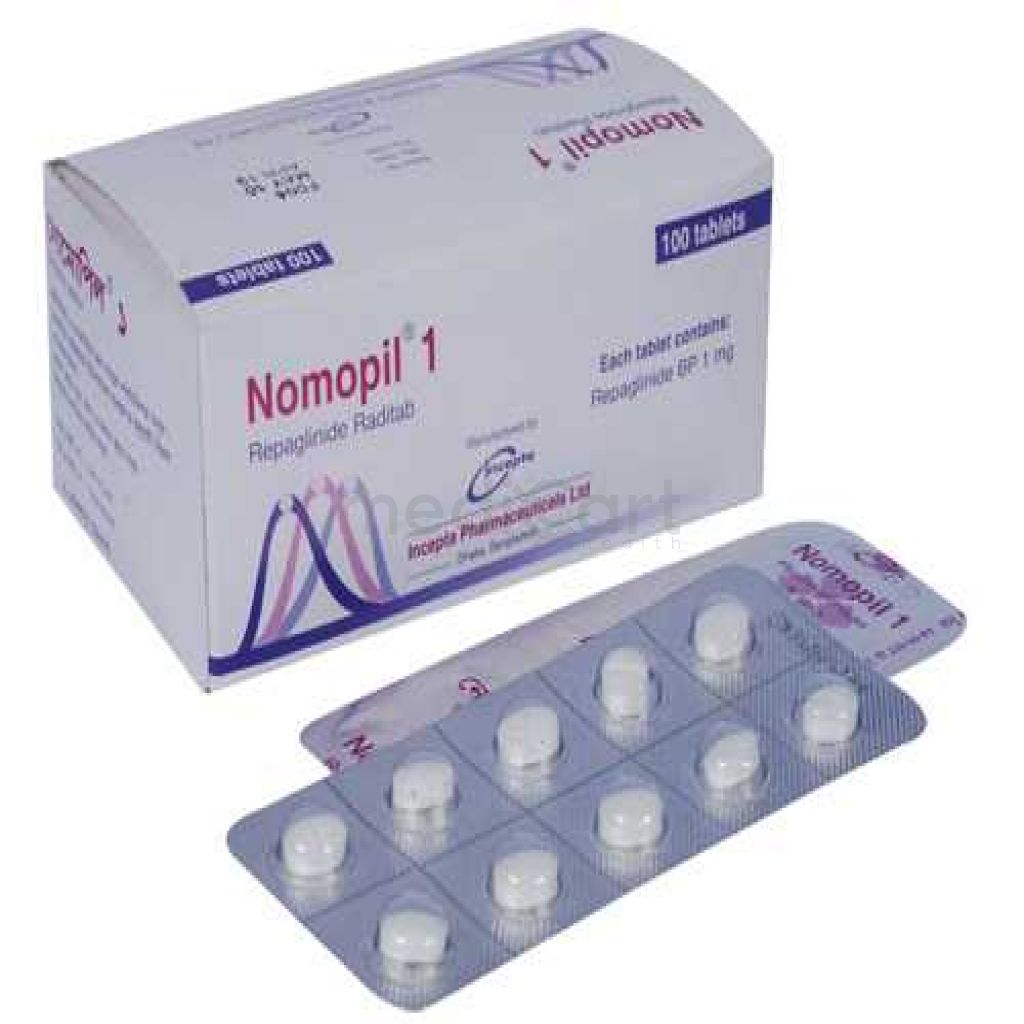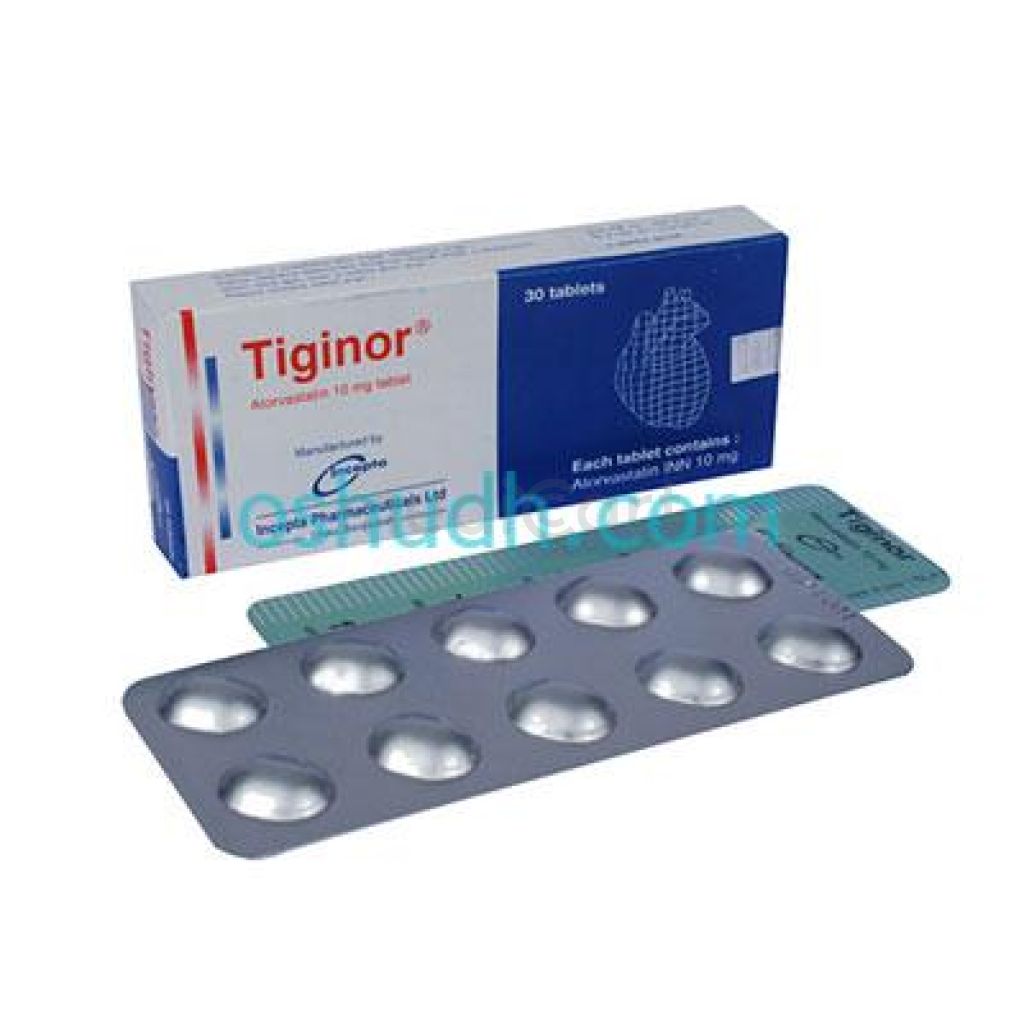

Prandil 1mg
Tablet
Pack Size :
10 Tablet x 1 strip
Generics :
Repaglinide
Manufacturer :
Unimed & Unihealth Manufacturers Ltd.
Best Price *
TK
30.00
* Delivery will be done in Dhaka city only.
More Information About - Prandil 1mg
Description
Generic Name
RepaglinidePrecaution
Myocardial infarction, coma, trauma during surgery, elderly, malnourished and debilitated patients. Hepatic or severe renal impairment. Pregnancy.Indication
Type 2 DMContra Indication
Diabetic ketoacidosis; severe hepatic impairment, type 1 diabetes; hypersensitivity. Lactation.Dose
N/ASide Effect
Hypoglycaemia, nausea, diarrhoea, constipation, vomiting, dyspepsia, arthralgia, sinusitis, rhinitis, back pain; rash, pruritus, urticaria; visual disturbances.Pregnancy Category
Name : Not Classified
Description
FDA has not yet classified the drug into a specified pregnancy category.Mode of Action
Repaglinide stimulates release of insulin from pancreatic beta-cells by inhibiting K efflux via closure of ATP regulated K channels. This results in depolarization of the cell and opening of voltage-dependent Ca channels, which increases influx of Ca into the beta cells and causes release of insulin.Interaction
Cytochrome P450 3A4 inducers eg. rifampicin, barbiturates and carbamazepine may increase repaglinide metabolism. NSAIDs and other highly protein bound drugs eg, salicylates, sulphonamides, phenylbutazone, oral anticoagulants and hydantoins may potentiate action of repaglinide. Ketoconazole, fluconazole, itraconazole and erythromycin may increase plasma conc of repaglinide. Antagonistic effect with drugs causing hyperglycaemia. Concurrent use with gemfibrozil may lead to enhanced and prolonged blood glucose lowering effect. Potentially Fatal: Increased risk of myocardial infarction when used with isophane insulin.Pregnancy Category Note
Pregnancy Limited available data from case reports and case series have not identified a drug-associated risk of major birth defects, miscarriage or adverse maternal, or fetal outcomes in women taking repaglinide while pregnant Clinical considerations Poorly controlled diabetes in pregnancy increases the maternal risk for diabetic ketoacidosis, preeclampsia, spontaneous abortions, preterm delivery, and delivery complications Poorly controlled diabetes increases the fetal risk for major birth defects, stillbirth, and macrosomia related morbidity Animal studies Teratogenicity was not observed in rats and rabbits administered repaglinide during organogenesis at approximately 60 and 1 times the maximum daily clinical dose Offspring of rat dams exposed to repaglinide at ?22 times clinical exposure on a mg/m? basis during days 17 to 22 of gestation and during lactation were less viable and developed skeletal deformations consisting of shortening, thickening, and bending of the humerus during the postnatal period; this was not seen at doses up to 4 times clinical exposure Lactation No data on the presence of repaglinide in human milk, the effects on the breastfeeding infant, or the effects on milk production Because of the potential for hypoglycemia in breastfed infants, repaglinide is not recommended for use when breastfeeding Animal data Detected in breast milk of rat dams and lowered blood glucose levels were observed in the pups Cross fostering studies indicated that skeletal changes could be induced in control pups nursed by treated dams, although this occurred to a lesser degree than those pups treated in uteroAdult Dose
Oral Type 2 diabetes mellitus Adult: Usual initial dose: 0.5 mg before main meals. Initial doses of 1 or 2 mg may be used in patients who have had previous hypoglycaemic treatment. May adjust dose at intervals of 1-2 wk, up to 4 mg before meals. Max dose: 16 mg daily. Hepatic impairment: May require longer intervals between dosage adjustments.Child Dose
Safety and efficacy not establishedRenal Dose
Renal Impairment CrCl 40-80 mL/minute: No adjustments necessary CrCl 20-40 mL/minute: 0.5 mg with meals; titrate slowly and monitor CrCl < 20 mL/minute: Data not availableAdministration
Take 15 minutes before meal; no more than 4 meals/dayDisclaimer
The information provided herein are for informational purposes only and not intended to be a substitute for professional medical advice, diagnosis, or treatment. Please note that this information should not be treated as a replacement for physical medical consultation or advice. Great effort has been placed to provide accurate and comprehensive data. However, Medicart along with its authors and editors make no representations or warranties and specifically disclaim all liability for any medical information provided on the site. The absence of any information and/or warning to any drug shall not be considered and assumed as an implied assurance of the Company.





